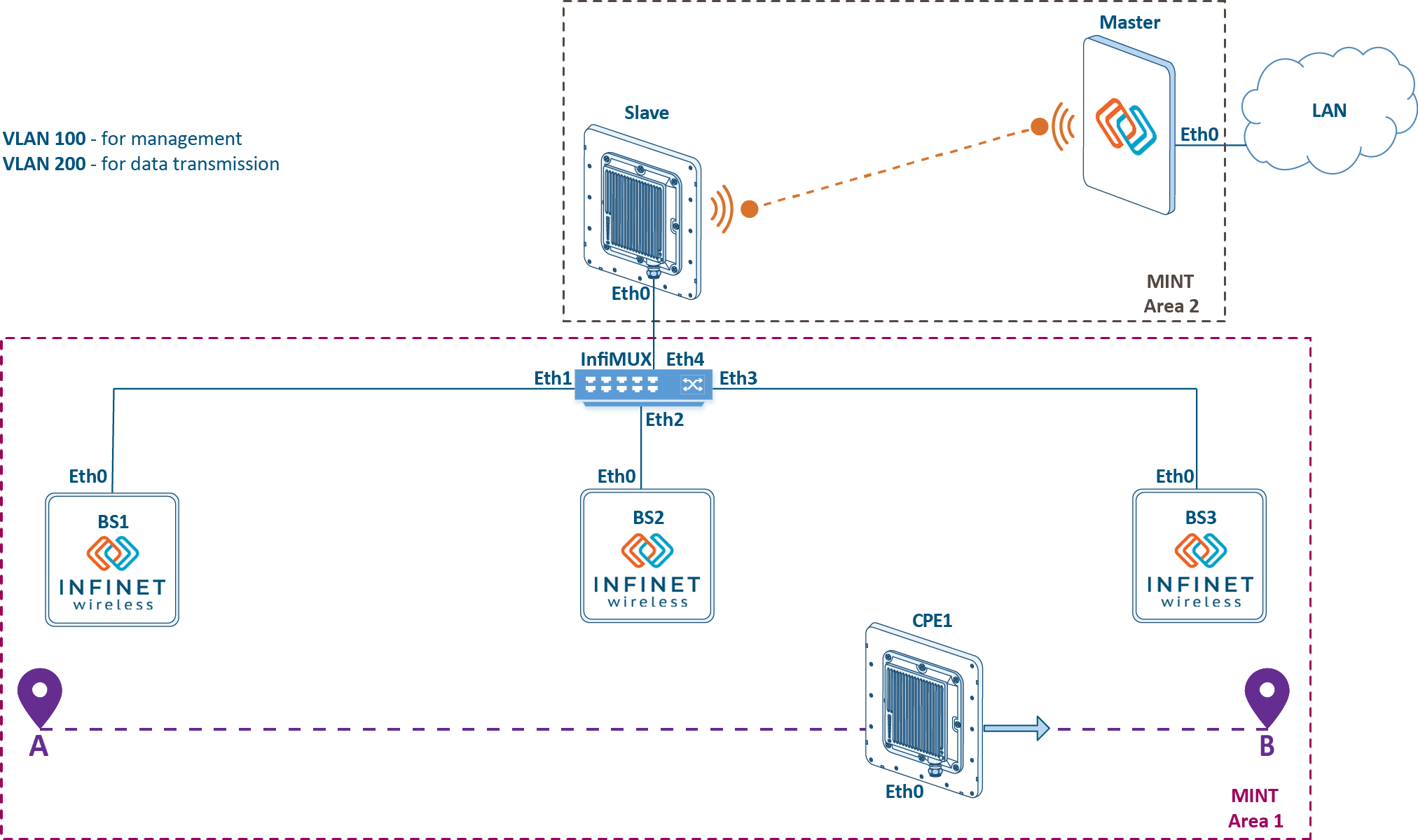...
- The base stations BS1, BS2 and BS3 are installed along the area perimeter, forming the backhaul radio network. Single-sector base station configurations are used, i.e. each BS has one sector. Non-overlapping frequency channels are configured on the base station sectors.
- A mobile object moves within the backhaul radio network from point A to point B. A subscriber terminal, CPE1, is installed on the mobile object. Depending on the requirements for the connection reliability, there are two implementation options: the installation of one subscriber with an antenna having a circular radiation pattern, or the installation of two subscribers on each moving object. During the motion, CPE1 can establish a radio link with the devices of the backhaul radio network - BS1, BS2 and BS3.
- The aggregation node is located near BS2, where the InfiMUX is installed. All BSs sectors are connected to the InfiMUX, which joins the radio backhaul network devices into a single MINT area.
- The aggregation node and the enterprise LAN are connected via the Master-Slave backbone link.
- The Global function is enabled on CPE1 and on the InfiMUX.
- "Mode nomadic" is set on the backhaul radio network devices and on CPE1, "mode fixed" - on the Master and Slave devices. Depending on the project specifics, other mode values may be set.
- For device management, VLAN 100 is reserved, which is associated with the 192.168.100.0/24 subnet.
- VLAN 200 is used for the data transmission service.
| Center |
|---|
Figure 1 - Example of a project with mobile objects |
...
